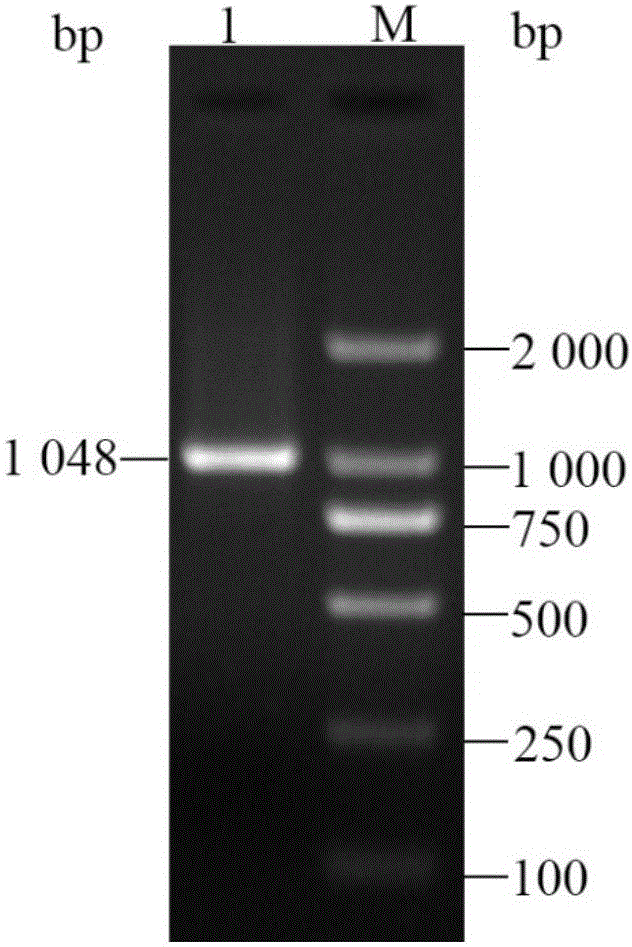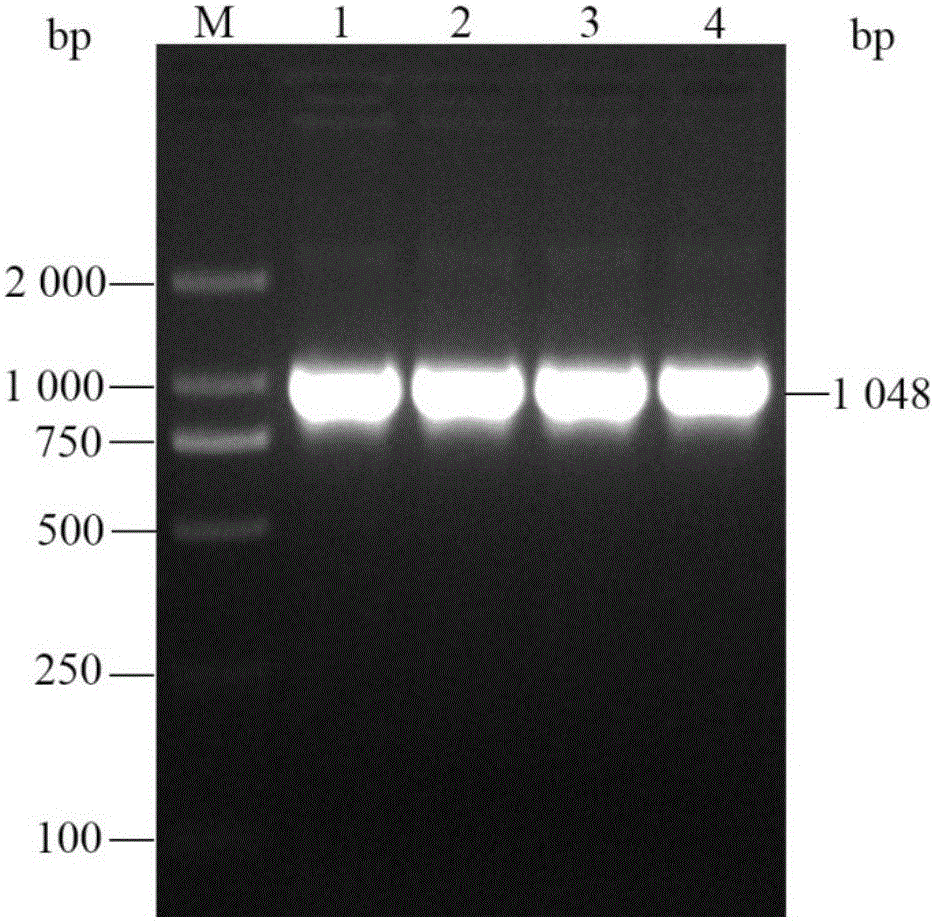Primer set and probe for apple Actin gene real-time fluorescent quantitative PCR (polymerase chain reaction) detection and detection method by using same
A real-time fluorescent quantitative and detection method technology, applied in biochemical equipment and methods, microbial determination/inspection, DNA/RNA fragments, etc., can solve the problem that primers cannot produce specific amplification and primer dimers, and cannot use multiple Target multiple detection, specificity (poor specificity, etc.), to achieve the effect of high sensitivity, high detection specificity, and strong specificity
- Summary
- Abstract
- Description
- Claims
- Application Information
AI Technical Summary
Problems solved by technology
Method used
Image
Examples
Embodiment 1
[0071] 1. Design and synthesis of primers and probes
[0072] Log on to the Genbank website, search for the published apple Actin gene sequence (AB6368619.1), and use Primer5.0 to design primers Act-sta-F1 and Act-sta-R1 that can amplify the full-length sequence of the Actin gene (Table 1).
[0073] Then according to the sequencing results of the amplified Actin gene, use the software ClustalX (1.81) to compare it with the Actin gene sequences of other plants, find a relatively conserved sequence as the detection target region, and use PrimerExpressv3.0 and Primer5.0 software TaqMan probe Act-Probe and specific amplification primers (Table 1) were designed. The 5' end of the probe was labeled with the fluorescent group FAM, and the 3' end was labeled with the quencher group BHQ1, which were synthesized by Dalian Bao Biological Engineering Co., Ltd.
[0074] Table 1 Primer and probe sequences
[0075]
[0076]
[0077] 2. Extraction of total RNA and synthesis of cDNA
...
Embodiment 2
[0154] Make standard curve
[0155] The concentration of in vitro transcribed cRNA was measured by micro-ultraviolet spectrophotometer to be 9.4ng·μl -1 , according to the formula: copy number concentration (copies·μl -1 ) = mass concentration (ng·μl -1 )×10 -9 ×6.02×10 23 / (RNA base number×330), the mass concentration was converted to the copy number concentration (Tao Zhenzhen et al., 2015). The calculated cRNA copy number concentration was 1.48×10 10 copies μl -1 .
[0156] Use EASYDilution to dilute the standard cRNA by 10 times to 1.48×10 8 ...1.48×10 2 copies μl -1 Eight gradient concentrations are used as templates for real-time fluorescent quantitative RT-PCR reactions.
[0157] (1) The RT system is:
[0158]
[0159] The reaction program was: incubate at 42°C for 30 minutes, inactivate at 85°C for 5 seconds, and store at 4°C.
[0160] (2) The real-time fluorescent quantitative PCR system is:
[0161]
[0162] The reaction program was: pre-denaturati...
Embodiment 3
[0166] 1. Comparison of sensitivity between real-time fluorescent quantitative PCR and conventional PCR
[0167] After diluting the standard cRNA by 10 times, real-time fluorescent quantitative RT-PCR detection and conventional RT-PCR detection were carried out respectively. The results are as follows: Figure 7 and Figure 8 shown. Figure 7 and Figure 8 Among them, 1~8: the concentration diluted by 10 times ratio is 1.48×10 8 ...1.48×10 1 copies μl -1 cRNA; 9: negative control. Figure 7 showed that real-time fluorescent quantitative RT-PCR can detect 1.48×10 1 copies μl -1 cRNA, Figure 8 showed that conventional RT-PCR could only detect 1.31×10 4 copies μl -1 cRNA, indicating that real-time fluorescent quantitative RT-PCR is 1000 times more sensitive than conventional RT-PCR.
[0168] 2. Reproducibility of real-time fluorescent quantitative PCR
[0169] Statistical analysis was performed on the Ct values of different concentrations of cRNA in the same test a...
PUM
 Login to View More
Login to View More Abstract
Description
Claims
Application Information
 Login to View More
Login to View More - R&D
- Intellectual Property
- Life Sciences
- Materials
- Tech Scout
- Unparalleled Data Quality
- Higher Quality Content
- 60% Fewer Hallucinations
Browse by: Latest US Patents, China's latest patents, Technical Efficacy Thesaurus, Application Domain, Technology Topic, Popular Technical Reports.
© 2025 PatSnap. All rights reserved.Legal|Privacy policy|Modern Slavery Act Transparency Statement|Sitemap|About US| Contact US: help@patsnap.com



